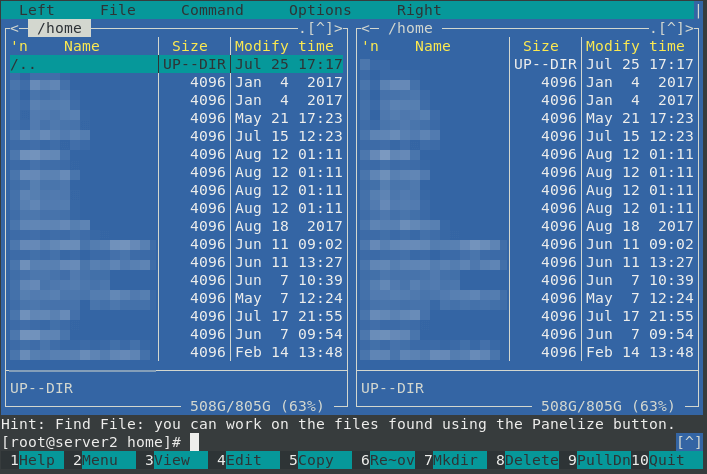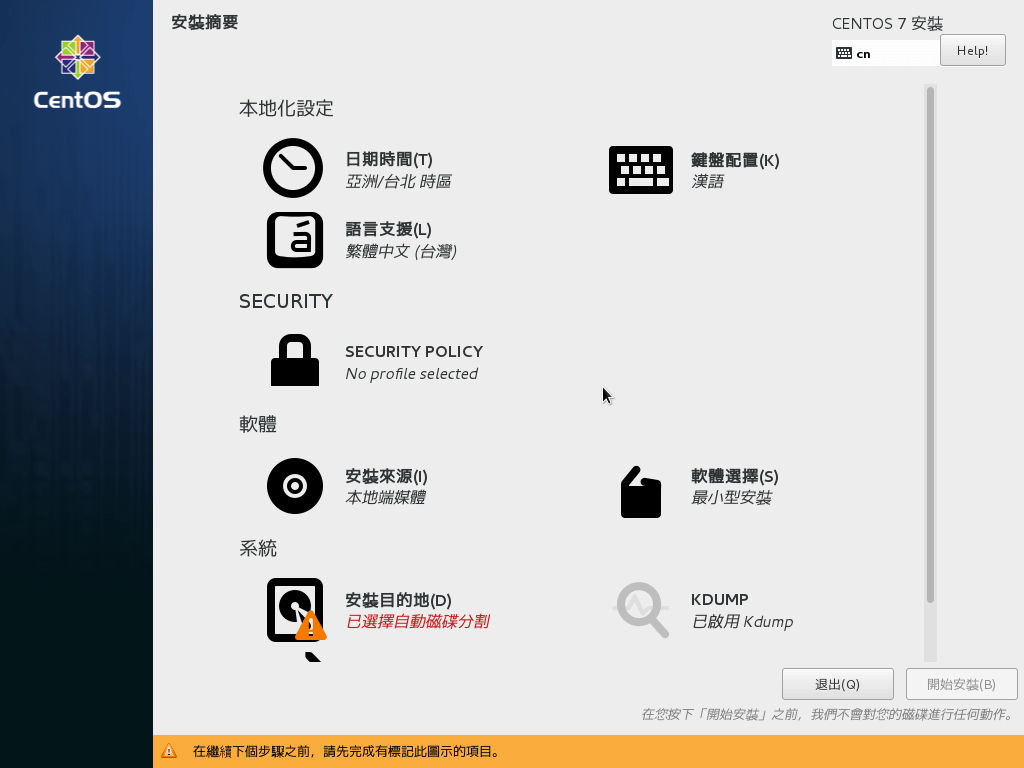Since EPEL itself is a repository so most probably you only need to run yum install epel-release -y command to simply install and enable epel repository. It should be smoothly installed without looking for any dependency. Once EPEL repository is installed, you can now check for available packages in the repository by using below yum command. Here we are searching package python36 from EPEL Repository.
If you are using CentOS or RHEL, it is often recommended that you configure EPEL repository on your system. EPEL is a community effort to create a repository of high-quality close to 7,000 add-on software packages for RHEL-based distributions. Once you set up EPEL repository, you can use yum command to install any of those EPEL packages.
EPEL is a repository that provides extra packages for Enterprise Linux. The EPEL repository is an additional package repository that provides easy access to install packages for commonly used software. This repo was created because Fedora contributors wanted to use Fedora packages they maintain on RHEL and other compatible distributions.
The EPEL group creates, maintains and manages a high-quality set of additional packages. These packages may be software not included in the core repository, or sometimes updates which haven't been provided yet. Epel project is not a part of RHEL/Cent OS but it is designed for major Linux distributions by providing lots of open source packages like networking, sys admin, programming, monitoring and so on.
Most of the epel packages are maintained by Fedora repo. You can install EPEL by running yum install epel-release. The package is enclosed within the CentOS Extras repository, enabled by default. The epel-release RPM installs two repository configuration files, /etc/yum.repos.d/epel.repo and /etc/yum.repos.d/epel-testing.repo. The high quality stable packages are available from epel repo and it is enabled by default.
The epel-testing repo is disabled by default and it contains packages that are not yet considered to be stable by the standards set by Fedora Special Interest Group for EPEL. EPEL repository or the "Extra Packages for Enterprise Linux" is an open source repository that was originally created based on Fedora and later developed for rankings as well as CentOS. The repository has advanced packages and a variety of tools that are generally not available in the default CentOS 7 operating system repositories, and users must install it to use it.
After installing this package and using it to install other libraries or other software, they may have problems and encounter errors. On RHEL 8 system, execute the beneath commands to enable epel repository. Before installing any new package in your Server it is always a good practice to first check for any latest updates by using yum update -y command as shown below. This will download and install all the available updates from enabled yum repository.
Since I already have installed the latest updates so it is not able to find any new updates. You can also verify that the EPEL repository is enabled on the system by listing all active repositories using the following command. To list the software packages that constitute the EPEL repository, run the command. Alternatively, you can use the following grep command to search for individual package names as shown. In this post we will discuss how to enable epel repository in CentOS / RHEL system. EPEL has an 'epel-release' package that includes GPG keys for package signing and repository information.
Installing this package for your Enterprise Linux version should allow you to use normal tools such asyum to install packages and their dependencies. By default the stable EPEL repo is enabled, there is also a 'epel-testing' repository that contains packages that are not yet deemed stable. EPEL 7 packages assume that the 'optional' repository (rhel-7-server-optional-rpms for servers) and therefore the 'extras' repository (rhel-7-server-extras-rpms for servers) area unit enabled.
You'll do that with subscription-manager repos –enable rhel-7-server-optional-rpms –enable rhel-7-server-extras-rpms. So, you can install any packages from EPEL repository with simple yum command. If you have CentOS 7 extras repository enabled, then all you have to do is install the epel-release package to enable EPEL 7 repository on CentOS 7. This article describes how to install the Extra Packages for Enterprise Linux repository on an unmanaged server running CentOS.
The EPEL repository enables you to install additional Fedora-based packages on CentOS servers. The EPEL group creates, maintains and manages a high quality set of additional packages. You need to run the following command to verify that the EPEL repository is enabled. Once you ran the command you will see epel repository.
The EPEL repository is an open source and free community based repository project from Fedora team, which provides 100% high quality add-on software packages for Linux distributions. In this guide we explored how to install and configure EPEL repo in RHEL 8 based systems like Rocky Linux. We saw that when installed, the installe automatically created a.repofile under /etc/yum.repos.d directory. You can disable the repository at any time by turning off the enabled flag.
Now repository is enabled and installed, run the below command to install package. To verify that the EPEL repository is enabled run the yum repolist command that will list all available repositories. The command will display the repo ID, name and the number of packages for the enabled repositories.
The output should include a line for the EPEL repository. The EPEL repository is managed by the EPEL group, which is a Special Interest Group within the Fedora Project. The'EPEL'part is an abbreviation that stands for Extra Packages for Enterprise Linux. EPEL repository provides an easy access to install packages for commonly used software.
This repo was mainly created to provide greater ease of access to software on Enterprise Linux compatible distributions. In this post, we will show you how to install the EPEL repository under RHEL / CentOS 7/6/5 to install additional standard open source packages using the yum command. On the terminal to verify that epel repository for CentOS has been enabled. Let's assume we want install htop package on our system from epel repository, run following command.
EPEL repository is part of special groups within the fedora group, it creates & maintains additional packages for Enterprise Linux, mainly CentOS, RHEL, Scientific Linux, Oracle Linux. EPEL stands for Extra Packages for Enterprise Linux & provides packages that are not available with the default repositories. To install the EPEL repository on any CentOS releases, log in to your CentOS server instance as a root user and run the commands as explained below as per your release version.
You need to use YUM command for searching and installing packages. For example we search for Zabbix package using epel repo, lets see it is available or not under epel. EPEL repo has an 'epel-release' package that includes gpg keys for package signing and repository information. Use following RPM command to install this package to enable EPEL repo in your server. After downloading the EPEL rpm file for your OS version, you can now install the EPEL repository. As you can see, enabling the CentOS epel repository is a relatively straightforward process.
In the next tutorial we will learn how to prioritize repositories using the yum-plugin-priorities. Most of the missing packages are available from the CentOS epel repository . The EPEL settings file is located at /etc/yum.repos.d/epel.repo.
This way you can install infinite standard open source packages using the EPEL repository. You must use the YUM command to search and install packages. For example, to search for the Zabbix package using the EPEL repository (to check if this package under the EPEL repository is available or not?) We execute the following command. To verify that the EPEL repository is enabled, run the command yum repolistwhich will list all the available repositories. Epel repository can install on CentOS 7 Using either yum or rpm command. That's all from article, I hope you have better understanding now on how to enable and use epel repository on CentOS and RHEL system.
' , as the name suggest epel provides additional rpm packages for RHEL, CentOS, Scientific Linux & Oracle Enterprise Linux . EPEL is created and maintained by Fedora community and EPEL packages are 100% free/libre open source software . A fresh installation of CentOS is always recommended. EPEL repository is a Fedora Special Interest Group that creates, maintains, and manages a high quality set of additional packages for Enterprise...
The EPEL project strives to provide packages with both high quality and stability. However, EPEL is maintained by a community of people who generally volunteer their time and no commercial support is provided. It is the nature of such a project that packages will come and go from the EPEL repositories over the course of a single release.
In addition, it is possible that occasionally an incompatible update will be released such that administrator action is required. By policy these are announced in advance in order to give administrators time to test and provide suggestions. Now update the software packages and verify the installation of the EPEL repository using the following commands.
EPEL free and open source community supported project. EPEL repository is a collection of high-quality add-on packages that complement the Fedora based Red Hat Enterprise Linux , CentOS and Scientific Linux. First, you need to download the file using Wget and then install it using RPM on your system to enable the EPEL repository.
For some of the Linux distributions epel-release package is not available under default repositories, can download the latest package from the official website on install the. Download and install the epel-release package as per your system version and architecture. Basically, they provide noarch packages, which means they are architecture-independent but still EPEL providing different packages to download. The EPEL or "Extra Packages for Enterprise Linux" is an online yum repository providing high quality of commonly used software packages. These packages are developed and tested on Fedora, which is available for RHEL. The EPEL repository is included in the Centos Extras repository and is enabled by default.
So you can easily install it by running the below command. YUM is the primary package management tool for installing, updating, removing, and managing software packages in Red Hat Enterprise Linux. YUM performs dependency resolution when installing, updating, and removing software packages.
YUM can manage packages from installed repositories in the system or from . Modules are a tool which allows one to have parallel availability of different package sets. One can set up a system and choose to have php-7.2 OR php-7.4 installed with appropriate sub-modules as needed. These are the Red Hat Enterprise Linux packages which koji and the build systems see as outside repositories. You can also verify the epel package installation by querying the RPMDB using rpm -qa | grep -i epel command as shown below. This command will query the epel package availability from all the installed packages in RPMDB.
In this article, I will take you through the steps to Install and Enable EPEL Repository on RHEL/CentOS 7/8. EPEL is a very commonly used repository for package installation on RHEL/CentOS Based Servers. Although EPEL Repository is created and managed by Fedora Community but it is very frequently used on other Linux Servers as well. You can find all the commonly available packages in EPEL repository hence it is always suggested to install this repository in your Server. Here we will look into the steps to install and Enable EPEL repository on RHEL/CentOS Based Servers.
Some EPEL packages depend on packages from repositories that are not enabled by default. Take note of the additional repositories being enabled in the following instructions. The Extra Packages for Enterprise Linux YUM repository contains high quality additional packages for Red Hat Enterprise Linux , CentOS Scientific Linux and Oracle Linux . It is maintained by the Fedora Special Interest Group for EPEL. This article decribes enabling EPEL repo on CentOS 5/6/7.
Repository under RHEL/CentOS 6/5 to install additional standard open source packages by using YUM command. The repositories which are available within CentOS by default are not always sufficient if you want to install additional software. The following article describes how to install and enable the EPEL repository on CentOS-8/7/6, how to verify the EPEL installation and how to remove it, if needed.
The commands below will download the epel.repo repository under the /etc/yum.repos.d/ directory and enables it. Visit the EPEL page and download the corresponding version of the EPEL release based on your OS version and install it using the yum command. Then run the below command to install epel-release-7.x.noarch.rpm. Just to show you RPM Command also can use to install epel on CentOS. First, you need to Download the latest rpm package from the Download Site.


























